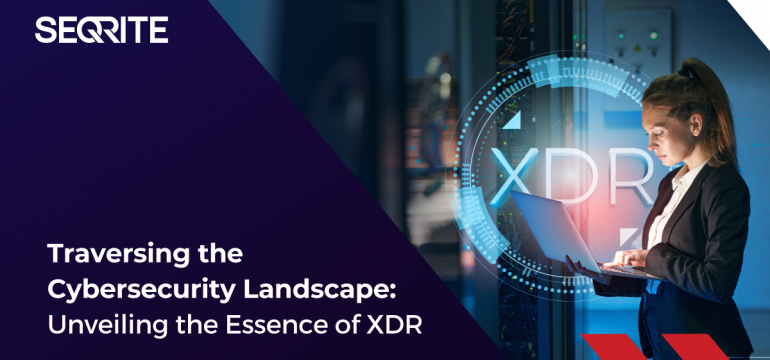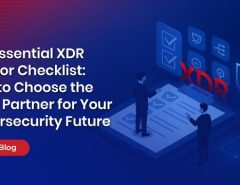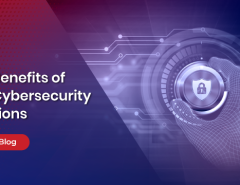In the ever-evolving territory of cybersecurity, where businesses face persistent incidents of Advanced Attacks, the Extended Detection and Response (XDR) solution has become a crucial component in fortifying their IT infrastructure. This blog highlights the gist of the SEQRITE-ETCISO webinar “How to Turbocharge Your Cyber Response Team with XDR,” where our expert, Mr. Sourav Biswas, delved deep into the imperative nature of XDR in the contemporary digital landscape, shedding light on its significance, evolution, and the sophisticated threats it combats.
Understanding the Surge of Advanced Attacks
The term “Advanced Attack” signifies a breed of highly sophisticated cyber threats executed by seasoned criminals. From fileless malware to social engineering and password attacks, these threat actors deploy advanced technologies to infiltrate business IT environments stealthily. The distinguishing feature of these attacks is persistence – where cybercriminals stay in the networks for long periods, continuing their assault.
The rising frequency of advanced attacks is a global concern. Pre-pandemic, the cybersecurity space witnessed a substantial volume of attacks. However, in the post-pandemic era, the incidence of advanced attacks has surged exponentially. Reports from our in-house Security Labs, as well as various global threat research organizations, have highlighted an alarming trend – a nearly doubling of advanced attacks annually.
Digital Adoption and the Vulnerability Paradigm
A key catalyst for the surge in advanced attacks is the fast-tracked digital adoption post-pandemic. Organizations globally embraced remote work, bring-your-own-device (BYOD), and other technology strategies for competitive advantage and enhanced business agility. This rapid shift has left cybersecurity practices and technologies struggling to keep pace, exposing organizations to advanced threats.
Added to that, there is increased availability of advanced attack technologies, including AI-generated exploit kits. The result is a spate of attacks that outpace the capabilities of traditional security technologies.
The Inadequacy of Traditional Technologies
Detecting advanced attacks is one of the main challenges traditional security technologies face. These attacks unfold as a series of events over time, rendering static blocking rules and conventional technologies ineffective. Blocking a single event may lead to false positives and an incomplete understanding of the evolving attack. Hence, the need for technologies that correlate events, provide comprehensive insights, and facilitate proactive responses becomes paramount.
Decoding Advanced Attacks through MITRE Tactics
To comprehend advanced attacks in detail, we turn to MITRE tactics and techniques. MITRE Corporation, a US non-profit organization, has meticulously documented many adversary techniques and procedures (TTPs). The essence of XDR lies in modeling these tactics, correlating events, and raising alerts when event chains align with these patterns.
XDR: A Multifaceted Defense against Advanced Attacks
XDR stands as a formidable defense mechanism against the intricacies of advanced attacks. It aggregates telemetry data from diverse sources, including traditional endpoint protection systems, EDR telemetry, and email and network alerts. The correlation of this data, coupled with MITRE TTP analytics, forms the core of XDR’s advanced detection capabilities.
Behavior anomaly detection, another critical feature of XDR, involves baselining EDR data over time to identify anomalies effectively. External threat intelligence contextualizes incidents, qualifying their severity and enabling informed response actions.
The Role of XDR in Incident Response
Automated response rules within XDR trigger immediate actions when detecting specific event chains. The isolation of affected endpoints and an orchestrated, multi-step response on endpoints form a robust remediation strategy. Root cause analysis (RCA) and preventive measures complete the incident response cycle, providing organizations with insights to enhance their security posture.
Securing XDR: Fortifying the Guardian
Acknowledging concerns about the security of XDR itself, stringent measures are in place to prevent vulnerabilities. Specialized agents, access permissions, and self-protection technologies ensure the robustness of XDR. Hosting XDR on secure cloud platforms like AWS further enhances its resilience against potential exploits.
Conclusion: Embracing XDR for Cyber Resilience
As organizations navigate the complex cybersecurity realm, the necessity of XDR becomes evident. The surge in advanced attacks, coupled with the rapid pace of digital transformation, demands proactive and adaptive security measures. XDR emerges as a comprehensive and intelligent solution, providing not just detection but a holistic response to the evolving threat landscape. Embracing XDR is not just a strategic move; it’s a crucial step toward building cyber resilience in an era where the stakes have never been higher.
Note: Watch the complete webinar at https://www.youtube.com/watch?v=EoYWsFPTCVk&t=1s




